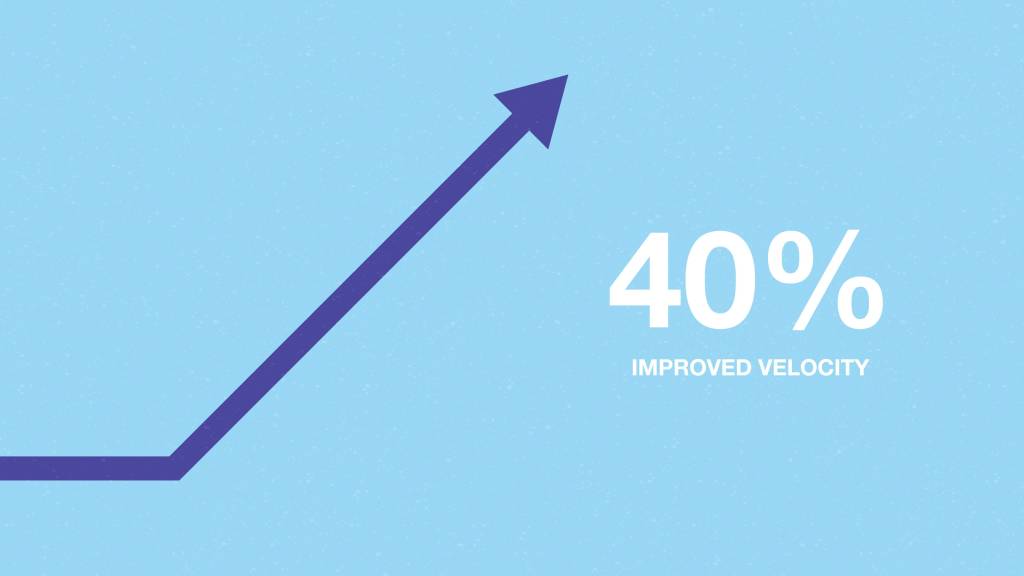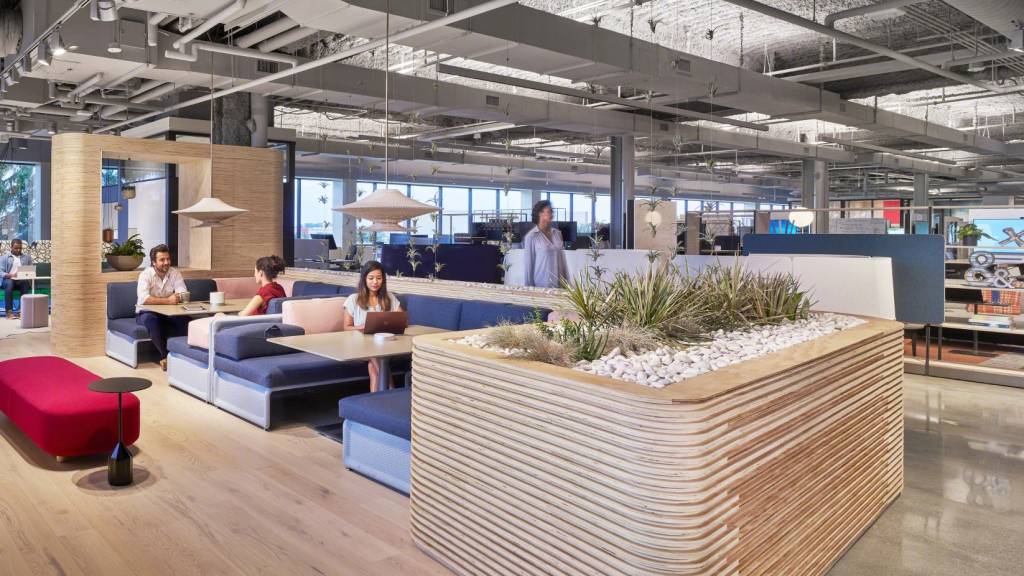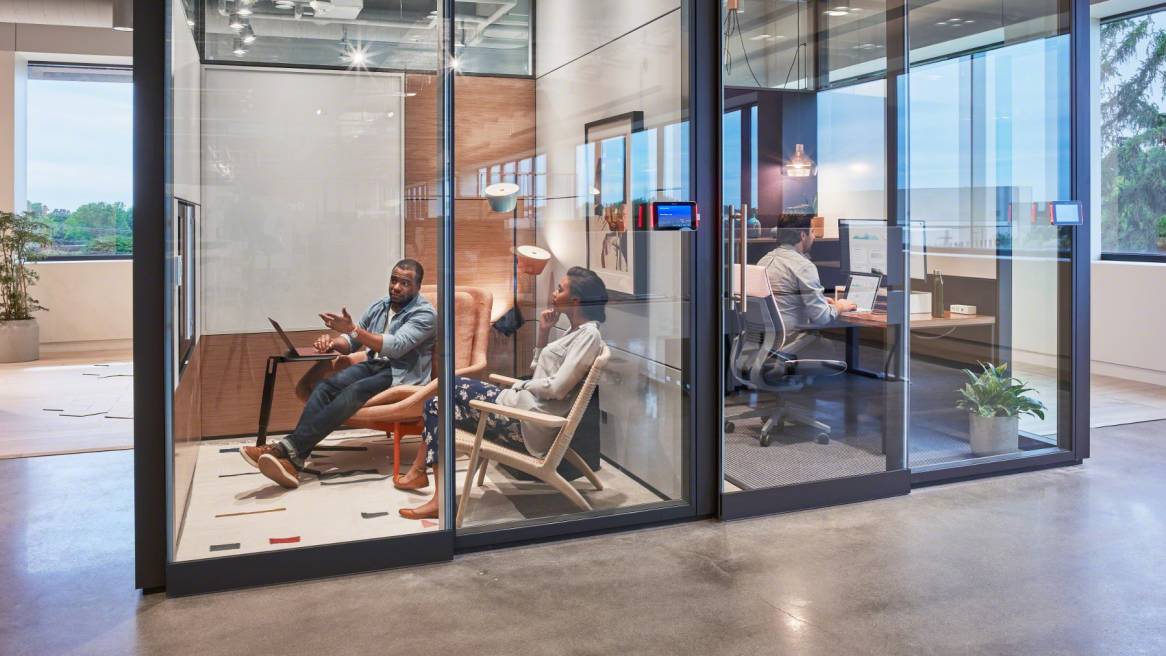Transforming IT at Steelcase: An Agile Case Study
Measurement
“This is an exciting time for us as leaders, our teams and our customers. Our transformation is unlocking a way for us to deliver more projects faster and offer greater value.”
Steve MillerSteelcase CIO
Far from a buzzword, creating an agile process, culture and workplace has been a significant and collective effort at Steelcase. Establishing appropriate measures for the project helps leaders, employees and customers understand and celebrate what works, learn from what doesn’t, and uncover room for further improvement.
Improved Velocity
Review of team dashboards shows a 40 percent improvement in velocity (amount of work completed during each Sprint) for agile teams operating within the new IT space. Teams forecast and track how many increments they can accomplish during a Sprint. The dashboards allow leaders to watch as the teams recast their velocity after each Sprint cycle.

“It’s dramatic. Once we move teams into the space, and the new process and behaviors are enabled, that’s when we see the jump,” says Miller. “It usually takes two Sprint cycles (four weeks) for us to see it once they’re in the space.”
While working in the user prototype, one agile team quickly experienced the benefits of the practice The team’s velocity was struggling. During the retrospective following the second Sprint, they discovered despite practicing agile, they still were working in more traditional ways. People were stuck in their own “swim lanes” and the entire team was still not located together.
The team added more height-adjustable worksurfaces and task seating to their area and improved collaboration. A developer with a wide skill set overhead his teammates challenges and suggested he could “change lanes” and pick up the work. His offer followed one of IT’s guiding principles — “We Succeed as a Team.” The impact on output was evident. The team logged 49 points in Sprint two and 100 points in Sprint four, doubling productivity.
Continuous Optimization
Additional measurement methods include Workplace Advisor Subscription sensors installed during move-in and Room Wizard reservation data, which together build a rich picture of how the space is used and how IT is collaborating.

Ninety days after move-in, leaders performed a periodic review of how the space was being used. They believed it might be able to support additional teams. Analysis of sensor data allowed them to make a data-driven decision to move three more teams into the new space. Seven teams, in all, had to shift within the space. But, because the design accounted for future needs to expand and contract, IT did not have to make any facilities requests to account for the moves.
Agile Adoption
“The data helps us make sure the workplace is serving the people who work there while facilitating desired cultural changes. If we see areas for improvement in a week or in a year, we can make immediate changes,” says Michael Bloem, PhD, analyst, applied data science at Steelcase. “As work changes, the workplace can respond to the people living in it.”
For example, Bloem says they wanted to find out if agile language and concepts were being adopted throughout IT. They analyzed room reservation data that used terms like “agile” and “Sprint” over time. Data showed more than a two-fold increase in bookings using those terms — helping to confirm agile is becoming more ingrained in the culture and the work process.
Ongoing Measurement
The cross-functional team tasked with the IT project put together a measurement plan that accounts for the immediate, short and medium term. The team started with the IT guiding principles and clarified the behaviors that would be evident when the guiding principles are met. From there, they developed and implemented an array of qualitative and quantitative methodologies through which to measure these.
Change takes time, of course, so the measurement efforts continue as the team gains insights and makes ongoing improvements to the space. In true agile spirit, the space will never really be complete. In fact, a ribbon cutting was never held, symbolizing to the team that the project is ongoing. It will continue to evolve and shift as teams’ work changes and new learnings manifest.
Stay Connected
This project along with Steelcase’s work with partners and customers has led to a growing volume of knowledge that can help organizations interested in the successful implementation of agile. If you’d like to receive updated research and insights, subscribe to 360 Magazine. You’ll receive our newest articles twice per month.
For support with the holistic approach to agile (assessment, leadership, teams, measurement and more), find out more about Steelcase Applied Research + Consulting or email them at arc@steelcase.com.
PREVIOUS CHAPTER – What Work Looks Like Now


